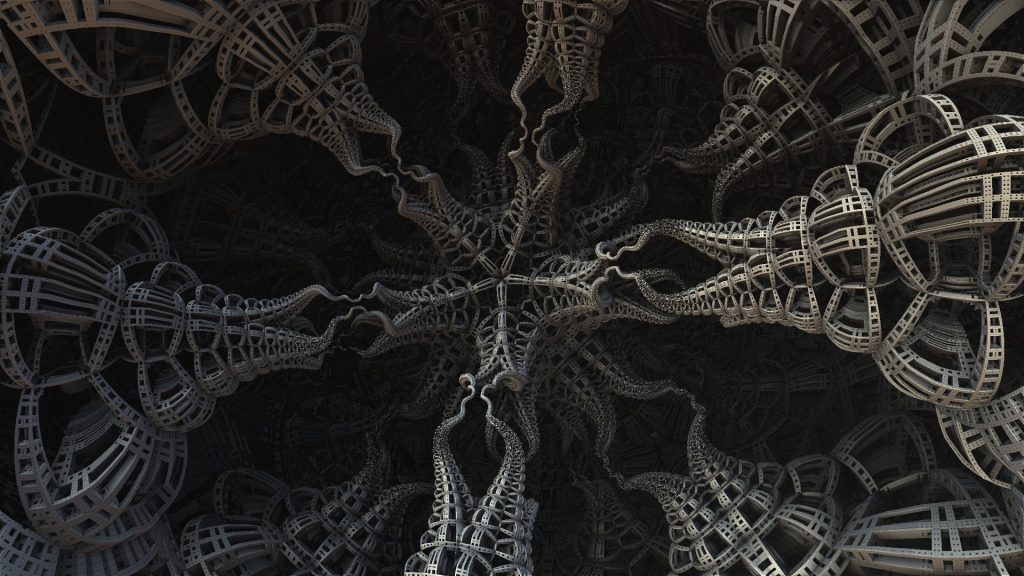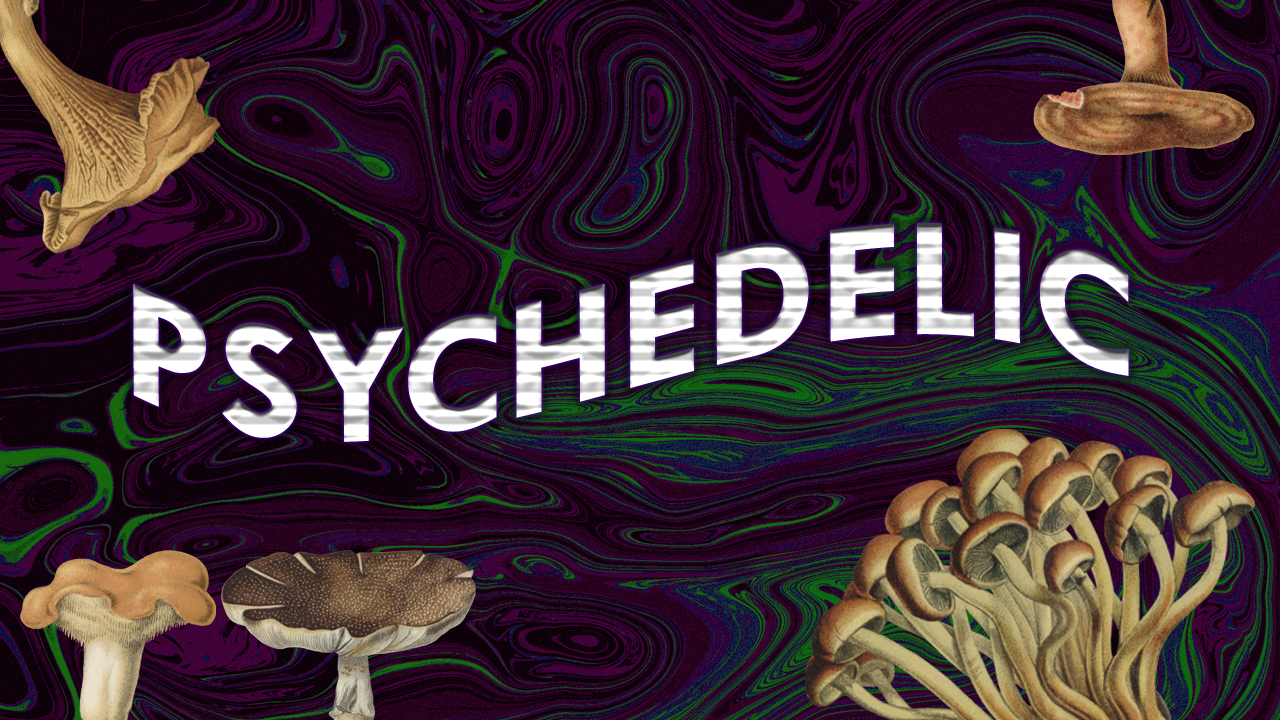Fractals are a special kind of geometric shape that is “self-similar.” This means that if you ‘zoom in’ on a fractal, you’ll see the same pattern repeating over and over again, no matter how much you zoom. In other words, they have the same structure at every scale. A simple example of a fractal in nature is a snowflake. If you take a close look at a snowflake, you’ll notice that each part of it is a smaller version of the whole.
Fractals can be defined mathematically and created by a process called iteration, which is a fancy term for doing something over and over again. For example, the famous Mandelbrot set is created by taking a number, doing a simple calculation, and then feeding the result back into the same calculation. If you do this many times, and then plot the results on a graph, you get a beautiful and intricate fractal pattern.
What are Fractals?
Fractals are mathematical constructs characterized by self-similarity and complexity. This means a fractal pattern can be divided into parts, each of which is a nearly identical reduced-scale copy of the whole. Fractals are not just theoretical constructs but can be observed in various natural phenomena and human creations.

History of Fractals
The term “fractal” was first coined by mathematician Benoit Mandelbrot in 1975, although the concept has roots in 17th-century mathematical studies. Mandelbrot’s work expanded on earlier infinity and mathematical irregularity studies, leading to a more comprehensive understanding of fractals.
One of the most fascinating aspects of fractals is that they are not confined to the realm of mathematical theory. They can be found all around us in nature, creating beautiful and complex patterns that we can see and touch.
What are Fractals in Nature?
Natural fractals are patterns that repeat at different scales. If you zoom in on a natural fractal, you will see a similar or identical pattern to the one you started with, just like with mathematical fractals. This property is known as self-similarity.
Examples of Fractals in Nature
Fractals can be found in a variety of places in nature:
Trees and Ferns: Look at a tree’s branches. A large branch will split into smaller branches, which split into even smaller branches, and so on. Each smaller scale is a rough copy of the larger scale. This property makes trees and ferns fractals.
Rivers: Rivers and their tributaries also form fractal patterns. A large river will split into smaller rivers or streams, which further split into smaller creeks.
Coastlines: If you’ve ever looked at a map, you’ve probably noticed that coastlines are not smooth lines. They have bumps and indentations that, when zoomed in, reveal smaller bumps and indentations. This characteristic makes coastlines fractal.
Mountains: Mountain ranges are another example. They have large peaks and valleys, which are made up of smaller peaks and valleys that resemble the larger ones.
Clouds and Snowflakes: Even clouds and snowflakes can have fractal structures. Clouds often have a cauliflower-like structure, while snowflakes show beautiful repeating patterns.
Why Does Nature Use Fractals?
Why does nature use fractals so often? One reason is efficiency. Fractals can create complex structures using simple rules, which is energy-efficient. For example, trees use the fractal design to maximize their exposure to sunlight, which is vital for photosynthesis.
Fractals in nature also provide a way for living organisms to adapt to their environment. For example, the fractal branching of trees and ferns allows them to fill the space efficiently, capturing more sunlight and nutrients.
Lastly, fractals can provide resilience. For instance, the fractal branching of blood vessels ensures that blood can reach all parts of the body. If one pathway is blocked, the blood can take a different route.
Fractals contribute to the beauty we see in nature. They create the intricate designs in snowflakes, the complex branching in trees and ferns, and the mesmerizing patterns in seashells and pinecones. Understanding fractals gives us a deeper appreciation of the natural world and the mathematical principles that govern it.
Fractal art is essentially a visual representation of a mathematical function or set of numbers generated by a mathematical function. The patterns are infinitely complex, meaning you can zoom in or out and find the same level of detail, no matter the scale. This property is known as self-similarity.
Fractal art can be incredibly detailed and exhibit an almost three-dimensional quality, even though it’s generated from simple mathematical formulas. They often evoke natural forms and structures, echoing shapes and patterns found in trees, river systems, clouds, and mountains.
Creating Fractal Art
To create fractal art, artists use special software like Mandelbrot Set, Julia Set, or other fractal-generating software. These software programs allow artists to generate fractal objects using mathematical formulas. The artist can manipulate these formulas to control the shape, color, and level of detail in the artwork, creating unique and intricate designs.
One of the most famous examples of fractal art is the Mandelbrot set. Named after the mathematician Benoit Mandelbrot, who coined the term “fractal,” the Mandelbrot set is a set of complex numbers that generate an intricate and infinitely complex shape when plotted on a plane.
Influences and Applications
Fractal art has influenced many areas of art and design. It’s been used in graphic design, animation, and even architecture. For example, fractal patterns have been used in the design of buildings to create structures that are both aesthetically pleasing and efficient in terms of space usage.
In the film industry, fractal software is often used to create natural-looking structures like alien landscapes, fantastical forests, or intricate cityscapes. The infinitely complex nature of fractals allows for the creation of highly detailed and realistic settings.
The Beauty of Fractal Art
Fractal art challenges the traditional boundaries between art and mathematics, showing that they can intersect in beautiful and unexpected ways. It’s a testament to the beauty that can emerge from simple mathematical rules, reflecting the complexity and intricacy of the natural world.
Fractal art, like any other art form, is a means of expression. It provides a way for artists to explore the infinite complexity of fractals and share their interpretations with the world. It invites us to see the beauty in complexity and to appreciate the hidden patterns in the world around us.
Fractal Geometry
Unlike traditional Euclidean geometry, which deals with shapes like lines, circles, and squares, fractal geometry delves into infinitely complex patterns. Fractal shapes have fractional dimensions, which is a concept that challenges our usual understanding of dimensions as whole numbers.
The concept of fractal dimensions is a fascinating aspect of fractal geometry that diverges from our traditional understanding of dimensions. To fully appreciate what fractal dimensions are, we should first revisit what we mean by “dimensions.”
What are Dimensions?
In everyday language, when we talk about dimensions, we usually think of three – length, width, and height. These are the dimensions that define the space we live in. For example, a line has one dimension (length), a square has two dimensions (length and width), and a cube has three dimensions (length, width, and height).
What Makes Fractal Dimensions Different?
Fractal dimensions, however, can be fractional, meaning they can take on values like 1.3 or 2.5. This is quite different from the whole number dimensions we’re used to. It’s a measure of how complex a fractal is, or how much space it takes up as you zoom in on it.
Imagine drawing a straight line, and then replacing the middle third of the line with a “bump” that forms an equilateral triangle without its base. Repeat this process for each straight segment of the now-modified line. This creates a fractal known as the Koch curve. If you continue this process indefinitely, the length of the line becomes infinite, but it still exists within a finite area. This is where the concept of fractional dimensions becomes helpful.
How are Fractal Dimensions Calculated?
To calculate the fractal dimension (D) of a shape, we can use the formula:
D = log(N) / log(S)
Here, N is the number of self-similar pieces, and S is the scaling factor. For the Koch curve example, each line segment is divided into 4 segments (N), each 1/3 the size (S) of the previous one.
So, the fractal dimension of the Koch curve would be:
D = log(4) / log(3) ≈ 1.26
This tells us that the Koch curve is more than a one-dimensional line but less than a two-dimensional shape. It’s somewhere in between, hence the fractional dimension.
Why are Fractal Dimensions Important?
Fractal dimensions give us a way to quantify the complexity of fractals. They provide a numerical measure of the ‘roughness’ or ‘complexity’ of a fractal shape. This can be useful in many real-world applications. For instance, in computer graphics, understanding the fractal dimension of an object can help generate realistic computer models. In medicine, examining the fractal dimension of cells can help identify certain diseases.
In conclusion, fractal dimensions are an intriguing aspect of fractal geometry that challenges our usual understanding of dimensions. They offer a way to measure and quantify the complexity of the fascinating and intricate shapes that fractals create.
Fractals and Chaos Theory
Chaos theory is the study of systems where small changes in initial conditions can cause vastly different outcomes. This is commonly known as the “butterfly effect” – the idea that a butterfly flapping its wings in Brazil could potentially cause a tornado in Texas.
Fractals are often observed in chaotic systems. This is because the equations that generate fractals usually involve feedback, where the output of a function is used as its input. This feedback can lead to complex and unpredictable behavior, characteristic of chaos.
For example, consider a population of rabbits. The population next year depends on the population this year. If there is plenty of food, the population will grow. But if there are too many rabbits, they’ll eat all the food, and the population will decrease. This feedback can lead to complex, chaotic fluctuations in the population, and if we were to graph these fluctuations over time, we would end up with a fractal pattern.
Fractals: The Footprints of Chaos
In essence, fractals can be seen as the ‘footprints’ of chaos. They reveal the inherent order hidden within seemingly chaotic systems. This connection between fractals and chaos theory has been used to study and understand a wide range of phenomena, from the fluctuations in stock market prices to the spread of epidemics.
The concept of fractals, with their self-similar, infinitely complex patterns, has found applications in many different fields, from science and engineering to art and entertainment. Let’s explore some of these applications and see how fractals are used.
Mathematics and Physics
Fractals first originated in the field of mathematics, and they continue to play an essential role here. They help in understanding complex geometric shapes and are used in number theory, algebra, and calculus. In physics, fractals are used in the study of chaos theory and quantum mechanics.
Computer Graphics and Animation
In the field of computer graphics and animation, fractals are used to generate intricate and detailed images. They help create realistic textures and landscapes for video games and animated films. Fractal algorithms can simulate natural phenomena like clouds, mountains, trees, or galaxies, providing more realistic and visually engaging scenes.
For example, the landscapes in movies like Star Trek II: The Wrath of Khan and the animated film Frozen used fractal-based software to create more realistic terrains and effects.
Digital Art
Fractal geometry has inspired a unique genre of art known as fractal art. Artists use specialized software to generate intricate fractal patterns, creating digital artworks that range from abstract swirls to designs that resemble natural landscapes or organic forms.
Medicine and Biology
In the field of medicine and biology, fractals are used to model complex biological structures like blood vessels, lungs, and neurons. These structures often exhibit fractal properties, with similar patterns repeating at different scales.
For example, the branching patterns of blood vessels and bronchial tubes in the lungs follow fractal geometry. Understanding these patterns can help doctors visualize and diagnose diseases.
Signal Processing
Fractals also play a crucial role in signal and image processing. They can be used to compress data without significant loss of quality. Fractal compression techniques analyze an image for self-similar patterns and then use these patterns to compress the image.
Network Theory
In network theory, fractals can be used to model and analyze complex networks. This includes internet traffic, social networks, and even the neural networks of the brain. These networks often exhibit fractal properties, with similar patterns repeating at different scales.
Material Science
Fractals play a role in studying the properties of materials at microscopic levels. The surface of a material often has a fractal structure, and understanding this can help researchers to manipulate the material’s properties.



